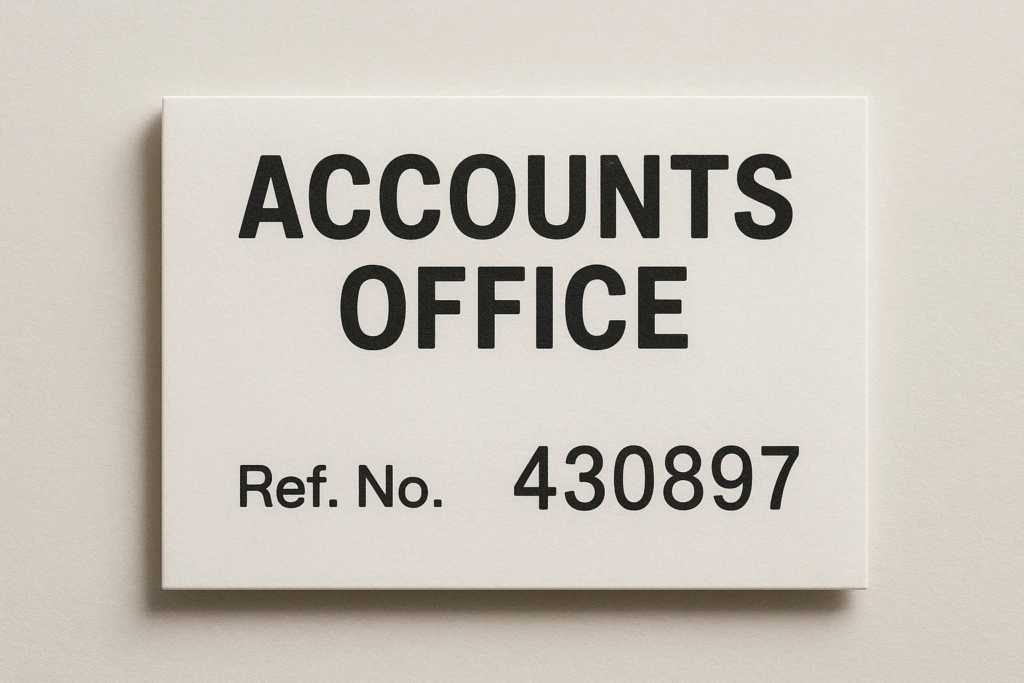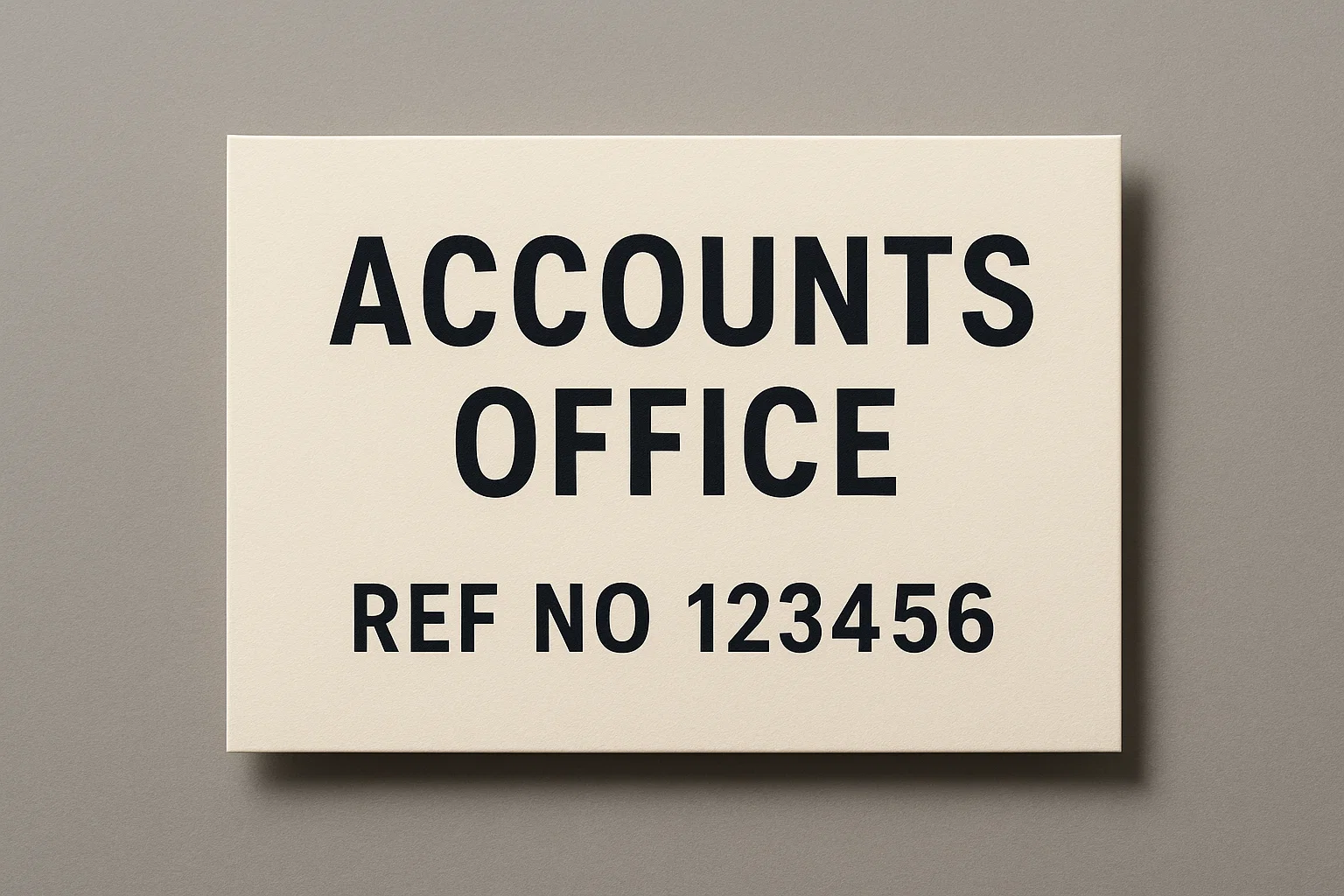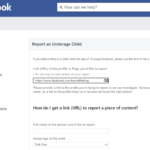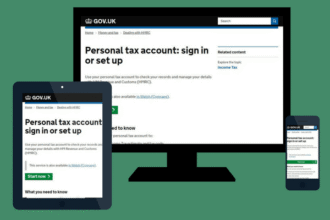introduction to accounts office reference number
Introduction: Why Your Accounts Office Reference Number (AORN) Truly Matters
Let’s be honest—when we first lay eyes on a scramble of numbers with a title that reads something like “Accounts Office Reference Number,” our eyes roll over. It sounds like something a dusty file clerk would say in a 90s sitcom. But if you’re running a business, working in payroll, or dealing with HMRC in the UK, this little sequence of numbers is not something to ignore. In fact, it’s one of the most essential identifiers for keeping your tax affairs in check.
Your Accounts Office Reference Number (usually abbreviated as AORN) isn’t mere bureaucratic jargon—it’s the pulse of your company’s link with HMRC. This code acts as an exclusive fingerprint for your payroll processing, tax filings, and overall compliance. Let’s cut to the what, why, how, and the “please-don’t-screw-this-up” of the world of AORN.

What Is an Accounts Office Reference Number (AORN)?
In simple terms, an Accounts Office Reference Number is given by HM Revenue and Customs (HMRC) in the UK so that your company can be identified when you’re making payments of PAYE (Pay As You Earn).
It’s the figure HMRC uses to associate any tax payments that have been made on behalf of your staff—Income Tax, National Insurance, Student Loan deduction—to the right employer record. Otherwise, your payments may be swimming in a virtual limbo, unallocated and unclaimed. accounts office reference number
Where Do You Find It?
You will normally get your AORN when you become an employer and register with HMRC. It comes together with your employer PAYE reference number and can be in:
Your HMRC welcome letter entitled “PAYE for Employers”
Your HMRC online account
Employer payment booklets
HMRC emails or letters about PAY
If you’ve lost it, don’t panic. You can get it back by logging into your HMRC employer account or contacting HMRC directly. But don’t attempt to make an educated guess about your number—it’s not something you want to improvise.
Understanding the Anatomy of an AORN
This is where we become a little technical. A normal AORN will resemble the following:
123PA00045678
We’ll break it down into two parts:
123PA – This is your regional tax office identifier. accounts office reference number
00045678 – This is your individual employer identifier. Consider it your business’s PAYE identification tag.
All the characters count. A missing or erroneous digit can spell disaster with HMRC.
Why the AORN Is So Important
Ensures Your PAYE Payments Are Sent to the Right Location
A miskeyed AORN may cause payment mistakes. Your funds might not find their way into the specified record, and that might cause misunderstanding or delay in verifying compliance. accounts office reference number
Streamlines the Payroll Process
Once properly configured in your payroll software, your AORN facilitates smooth tax-related submissions and payments to HMRC. accounts office reference number
Averts Penalties
Incorrect returns because you didn’t enter or put in any incorrect AORN entries can result in fines. Even if you got the amount right, but it’s not tagged right, you might be reported as non-compliant. accounts office reference number
How to Use the Accounts Office Reference Number
Proper use of your AORN is all about being regular and meticulous. You will use it when:
Filing payroll information using Full Payment Submissions (FPS)
Paying tax to HMRC
Installing your payroll software
Replying to HMRC letters
Get into the habit of copying your AORN directly from your HMRC portal or official letters. Never rely on guesswork or memory. accounts office reference number
Common Mistakes and How to Avoid Them
Using the Wrong Reference in Bank Transfers
Always double-check that you’re using the full AORN when making payments—not just your employer PAYE reference. accounts office reference number
Typing Errors
One wrong digit can misroute your payments. Store your AORN in a secure, digital format and use copy-paste wherever possible.
Internal Disorientation of Employees
Ensure that your payroll, finance, and HR departments understand what the AORN is and when it should be applied. It is advisable to include it in your payroll checklist for internal use or in your training manual.
Replacing or Retrieving a Missing AORN
If you have lost your AORN, this is how you can retrieve it:
Search Online from within your HMRC login.
Check Through Previous Correspondence like PAYE registration letters or previous RTI submissions. accounts office reference number
Get in touch with HMRC by phoning the Employer Helpline. Keep your business information and tax ID handy. accounts office reference number
Getting your number back isn’t hard—but you should do it sooner rather than later to prevent late payments or submitting incorrectly. accounts office reference number
What Do You Do If You Get the Reference Wrong?
This is where things can get out of hand.
If HMRC receive a payment using the incorrect AORN, they might:
Mark your payment as unallocated
Issue penalties or warning letters
Charge late payment interest
Highlight your business for compliance check
Even if you’ve paid the right amount, an incorrect reference will delay and confuse things. If you find an error, let HMRC know at once and send your payment information along with the right reference number.
Accounts Office Reference Number and Employer PAYE Reference
Let’s sort out a misunderstanding that’s common. Although both references are published by HMRC and applied in PAYE operations, they’re different.
Feature AORN Employee PAYE Reference
Length Thirteen characters Generally eight to ten characters
Purpose Applied when paying tax Applied in payroll submissions and payslips
Where It’s Used On payments to HMRC On employee records and reports
Where to Find It HMRC payment letter, portal PAYE registration documents
Knowing the difference ensures accuracy in using payroll software or submitting. accounts office reference number
Payroll Software and the AORN
Most legitimate payroll systems will ask you to enter your AORN when you set it up. If you enter an incorrect number:
Submissions can fail
Payments may be rejected
HMRC errors will cause delays in processing
This is particularly relevant to companies making use of Real-Time Information (RTI) services. Most tools such as Xero, QuickBooks, Sage, or BrightPay will even highlight missing or incorrect AORN entries. Don’t dismiss the warnings—your compliance relies on it.
A Real-Life Example That Hits Home
Consider the local boutique owned by businesswoman Sarah. She set up her PAYE account and brought in a part-time finance assistant to manage payroll. Tragically, they entered the Employer Reference Number into the field for AORN.
Months passed without a problem, until a letter from HMRC threatened unpaid PAYE amounts. Payments were made, but they floated unlinked due to the lost reference. Sarah endured stress, penalties, and a lengthy reconciliation process.
The moral? Check your figures twice. The AORN is not glamorous, but it is effective in the right hands.
Best Practices for Managing Your AORN
To remain in HMRC’s good books and have a smooth payroll process, adopt these best practices:
Store It Securely: Have your AORN stored in your payroll system as well as in a secure, readily accessible backup.
Use Automation: Have your software prepare submissions with the right AORN to minimize the risk of human error.
Keep Staff Informed: Ensure your staff are aware of what this number is and when to apply it.
Check Submissions on a Regular Basis: Ensure all outgoing RTI or bank payments have the right reference.
Keep in Sync with HMRC: Access your account from time to time to ensure payments are being distributed properly.
Conclusion: A Simple Number with a Powerful Purpose
It may seem at first glance like another bit of admin, the Accounts Office Reference Number. But once you know how pivotal it is to payroll, tax submissions, and HMRC compliance, it deserves its place as one of your company’s unnoticed heroes.
This number ensures your hard-earned payments are credited properly. It keeps your payroll software in check. It’s your proof to HMRC that you’re doing things right. So take care of it, store it wisely, and never underestimate its value.
Staying organized with your AORN isn’t just smart—it’s a powerful way to build financial clarity, avoid penalties, and maintain a rock-solid reputation with the taxman.





